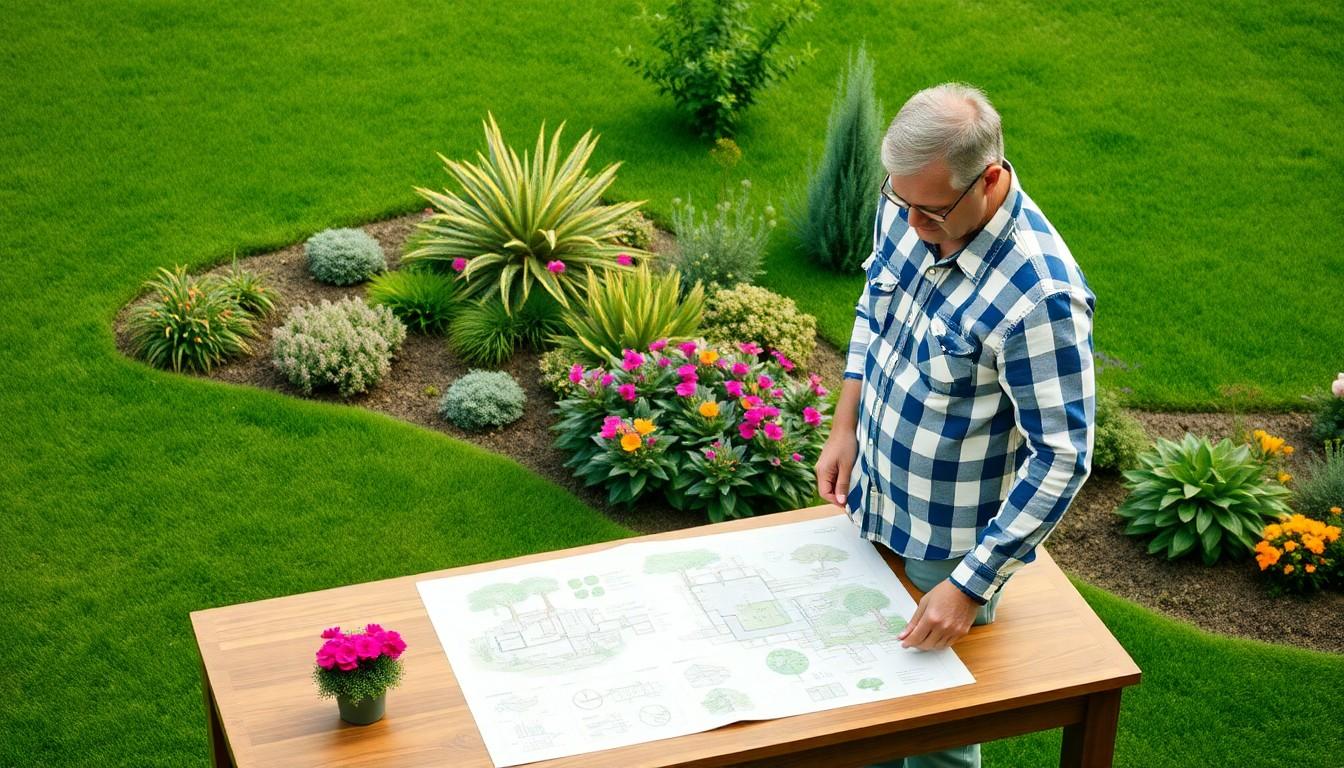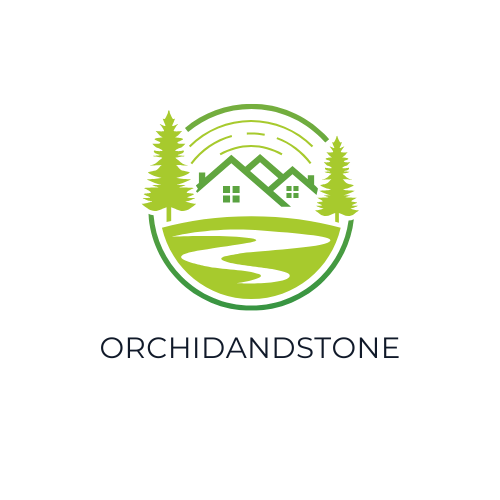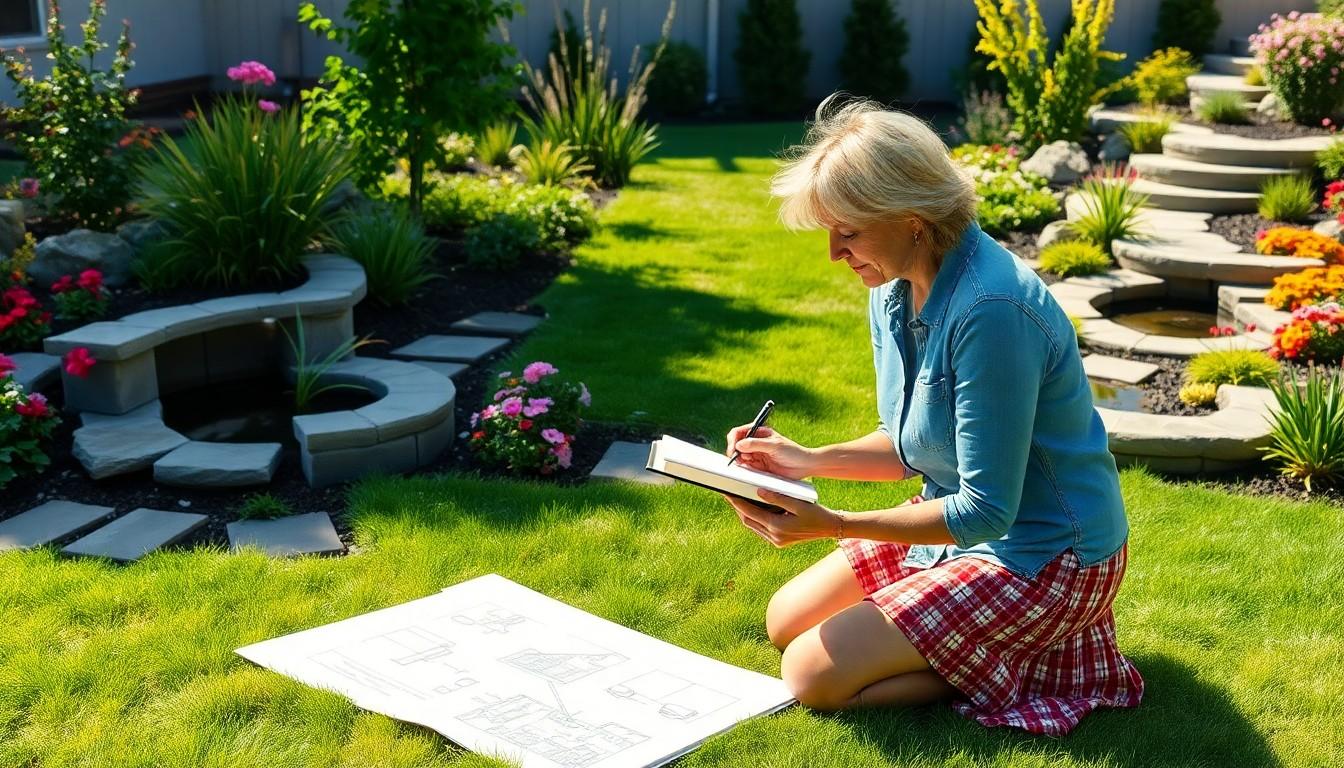Imagine stepping into a backyard that feels like a mini paradise, where every plant knows its place and the flowers bloom in perfect harmony. Landscape design plans can transform that daydream into reality. With the right blueprint, even the most chaotic outdoor space can become a serene retreat or a vibrant entertainment hub.
Landscape Design Plans
Landscape design plans serve as detailed roadmaps for creating visually appealing and functional outdoor spaces. These plans encompass various elements like plants, hardscapes, water features, and lighting to achieve harmony. Professionals typically use software tools to draft these plans, which provide precise measurements and layout designs.
Cost considerations play a significant role in the planning process. Budgeting for materials, labor, and maintenance is crucial to ensure the project remains feasible. Homeowners can expect to spend anywhere from $1,500 to $3,500 for basic designs on average, with costs increasing for complex projects.
Permitting needs also influence landscape design plans. Certain municipalities require permits for specific installations, including decks or large trees. Checking local regulations ensures compliance and avoids potential fines.
Clients often engage with landscape designers through an initial consultation. During this session, designers gather essential information about the client’s preferences, lifestyle, and existing landscaping features. This collaborative effort leads to a tailored design that meets individual needs.
Sustainability considerations are increasingly important in modern landscape design. Incorporating native plants, efficient irrigation systems, and green materials contributes to an eco-friendly environment. Designers frequently prioritize these aspects to enhance biodiversity and reduce maintenance.
Finally, the implementation phase brings the design to life. Contractors will follow the landscape design plans to install featuresin accordance with the specified layout. Regular updates from the designer help ensure that the project aligns with the initial vision throughout the process.
Key Components of Landscape Design

Several key components play a vital role in landscape design, transforming visions into tangible outdoor spaces. Understanding these elements aids in creating harmonious and functional designs.
Site Analysis
Site analysis involves assessing existing conditions, such as topography, soil quality, and climate. Evaluating sunlight and wind patterns helps identify the best locations for various features. This analysis also uncovers limitations like drainage issues or invasive plant species. Specific measurements guide effective planning for layouts and plant placement. Effective site analysis lays the foundation for tailored designs that enhance the site’s natural beauty.
Concept Development
Concept development is essential for creating cohesive designs. Designers collaborate with clients to identify preferences and requirements. They sketch initial ideas, considering how different elements will interact and function together. This phase focuses on defining the overall style, from modern minimalism to lush tropical aesthetics. Incorporating client feedback ensures the final design aligns with their vision. Effective concept development results in a comprehensive plan ready for implementation.
Plant Selection
Selecting plants requires careful consideration of aesthetics and functionality. Choosing native species enhances local biodiversity and reduces maintenance needs. Plants should also align with the site’s environmental conditions, ensuring they thrive in their new location. Seasonal blooms and varying textures add visual interest throughout the year. Diversity in plant selection creates layers within the landscape, enhancing its character. Thoughtful plant choices contribute significantly to the overall success of the design.
Types of Landscape Design Plans
Various landscape design plans cater to different environments and purposes. Each plan addresses specific needs and aesthetics, ensuring functional beauty in outdoor spaces.
Residential Landscape Designs
Residential landscape designs focus on creating inviting outdoor environments for homes. These plans often include features like gardens, patios, and walkways that enhance usability. Incorporating native plants ensures sustainability while providing visual appeal. Furthermore, lighting elements add safety and ambiance, accommodating evening gatherings. Homeowners typically invest between $1,500 and $3,500 for foundational designs, allowing flexibility for more intricate features or upgrades later.
Commercial Landscape Designs
Commercial landscape designs aim to enhance the visual appeal of businesses and public spaces. These plans consider the site’s purpose, prioritizing functionality alongside aesthetics. Hardscapes, such as seating areas and pathways, facilitate visitor movement while promoting comfort. Using durable materials ensures longevity, especially in high-traffic areas. Collaborating with architects and designers provides a cohesive vision that reflects the brand’s identity. Companies often invest significantly more in these designs due to their impact on first impressions and customer experience.
Benefits of Professional Landscape Design
Professional landscape design offers numerous advantages for homeowners and businesses alike. One significant benefit includes increased property value, with well-designed outdoor spaces often fetching prices 15% to 20% higher than comparable properties. Effective designs create aesthetically pleasing environments that enhance overall attractiveness.
Environmental benefits also play a crucial role in professional landscape design. Native plants selected for these spaces promote biodiversity and require less irrigation. Sustainable designs can reduce water usage by up to 50%, contributing to lower utility bills while helping the planet.
Functionality is another key aspect. Thoughtful layout and elements like pathways, seating areas, and gardens ensure spaces serve specific needs effectively. Well-structured outdoor areas facilitate better movement, accommodating social gatherings or quiet retreats.
Energy efficiency is often achieved through strategic placement of trees and shrubs. These features provide shade, reducing cooling costs during hot months by as much as 20%. Additionally, lighting design enhances safety and extends usability during evenings.
Time savings also factor prominently in professional landscape design. Engaging experts allows homeowners and businesses to avoid common pitfalls and costly mistakes. Designers bring experience to the table, ensuring projects adhere to local regulations and guidelines.
Consultation services lead to designs reflective of personal preferences and existing site conditions. Priority on communication means the final product aligns with the client’s vision, leading to a more satisfying outdoor environment.
Long-term maintenance plans offered by professionals can ensure landscapes thrive over time. Regular upkeep keeps outdoor areas looking vibrant while allowing for adjustments as seasons change. Overall, investing in professional landscape design delivers lasting rewards that enhance both beauty and functionality.
Common Challenges in Landscape Design
Landscape design presents several challenges that can impact the outcome of a project. Identifying existing site conditions plays a critical role in the design process. Soil quality, drainage issues, and topography may complicate planning, necessitating thorough analysis.
Budget constraints often limit design possibilities. Homeowners typically invest between $1,500 and $3,500 in basic design plans. Complex projects, however, can significantly increase costs, leading to potential compromises in design quality.
Permitting processes introduce another layer of complexity. Local regulations may require approvals for certain installations. Ignoring these requirements can result in fines, making it essential for designers to navigate this landscape effectively.
Client expectations challenge designers as well. Capturing personal preferences while adhering to practical considerations can create tension. Open communication between designers and clients fosters collaboration, ensuring that design elements align with client desires.
Changing environmental conditions add further complications. Climate variability impacts plant survival, making native plant selection vital. Designers must choose species that thrive in local environments to maintain landscape longevity.
Time management remains a common hurdle during implementation. Coordination between contractors and designers is crucial. Regular updates help ensure that the project adheres to the original vision, minimizing miscommunication.
Sustainability concerns continue to rise among clients. Incorporating eco-friendly materials and practices enhances biodiversity and reduces environmental impact. Designers increasingly prioritize green solutions that resonate with environmentally conscious homeowners.
Ultimately, overcoming these challenges leads to the successful realization of insightful landscape design plans that bring beauty and functionality together.
Lasting Enjoyment
Investing in landscape design plans can significantly enhance outdoor spaces while offering numerous benefits. A well-executed design not only elevates property value but also fosters environmental sustainability. By focusing on native plants and eco-friendly materials, homeowners contribute to biodiversity and reduce maintenance costs.
The collaboration between clients and designers is essential in creating personalized spaces that reflect individual preferences. As challenges arise during the process, effective communication and expert guidance pave the way for successful outcomes. Ultimately, thoughtful landscape design transforms ordinary areas into beautiful retreats or vibrant entertainment zones, ensuring lasting enjoyment for years to come.

